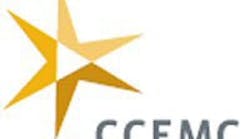Last year, the Climate Change and Emissions Management Corp. (CCEMC), Sherwood Park, Alberta, launched a C$35-million (U.S. $31.8-million) international competition for technology to markedly cut greenhouse gas (GHG) emissions by creating new carbon-based products and markets. “The CCEMC Grand Challenge will foster the innovation and collaboration required to accelerate the development of these critical technologies and help Alberta and the world to reduce GHG emissions,” noted Paul Clark, chair of the Grand Challenge Steering Committee, who is president of VisionGain Consulting, Calgary, and previously was vice president, research and technology, for Nova Chemicals.
[pullquote]
CCEMC received 344 entries from 37 countries. In April, it named 24 groups as winners of the first round of the competition. The victors come from the U.S. (14), Canada (7) and the U.K. (3). Each will receive C$500,000 ($454,000) as well as access to a support team to help them develop their ideas.
The winners include companies, universities and research organizations. Three groups are focusing on biofixation, nine on solid products, five on chemical synthesis and seven on developing fuels.
Among the victors are:
• Quantiam Technologies, Edmonton, Alberta, which developed technology to combine hydrogen and CO2 captured from emissions to produce methanol. Its catalyst system promises efficiency gains while operating at less severe conditions than alternatives.
• The Gas Technology Institute, Des Plaines, Illinois, which devised a route to use CO2 from GHG and methane from natural gas to produce acetic acid. The two-step catalytic process may offer a cheaper, more-efficient method for making acetic acid.
• Liquid Light, Monmouth Junction, New Jersey, which uses power from renewable resources such as wind to convert CO2 into organic chemicals such as ethylene glycol. The electrochemical technology potentially could produce more than 60 different organic chemicals.
• E3Tec Service, Clarksville, Maryland, which came up with a method to react captured CO2 with methanol to produce dimethyl carbonate. The heat-integrated reactive distillation process boasts the prospect of both energy and capital cost savings.
• RTI International, Research Triangle Park, North Carolina, which developed a way to use CO2 for making ethylene oxide from hydrocarbons. The route gets the oxygen needed from CO2 instead of from air.
• Robert Gordon University, Aberdeen, U.K., which devised a process that uses CO2 in flue gas to produce hydrocarbon fuels and feedstocks, ammonia and urea. The method features a reactor containing porous sintered-metal tubes coated with catalyst.
• The University of California, Riverside, California, which proposed a method for making synthesis gas from CO2 and methane, and then converting the syngas to methanol. The syngas formation step relies on a novel pyrochlores catalyst.
• The University of Alberta, Edmonton, Alberta, which invented a fuel cell that uses methane, CO2 and air to produce electricity, carbon monoxide and water. The unit not only consumes CO2 but also generates an amount of electricity comparable to that from conventional fuel cells.
• The University of British Columbia, Vancouver, British Columbia, which formulated a process that employs CO2 to desalinate industrial wastewater. The method features an electrochemical cell in which the salts in the water react with CO2 to form high-value oil-field chemicals such as acids and carbonate salts.
More details on CCEMC, the Grand Challenge and the first round winners appear at http://ccemc.ca.
The Alberta government created the CCEMC in 2009 to foster a stronger, more-diverse and lower-carbon economy in keeping with the province’s climate change strategy. Alberta is aiming by 2050 to cut emissions to 50% of the “business as usual” level.
CCEMC is an independent organization but gets money from Alberta’s Climate Change and Emissions Management Fund. This is administered by the provincial government and was set up to receive fees (C$15/metric ton) that large emitters in Alberta may pay if they don’t meet legislated reductions in GHG emissions.
In September 2015, CCEMC will launch Round Two of the competition; it will welcome new entries. Five winners each get C$3 million ($2.7 million). In addition, they will compete in Round Three, whose victor will receive a C$10-million ($9.1-million) grant in 2018 to establish a business that cuts GHG emissions in Alberta by one net megaton annually.

MARK ROSENZWEIG is Chemical Processing's Editor in Chief. You can e-mail him at [email protected]
Latest from Reaction & Synthesis
Latest from Reaction & Synthesis
